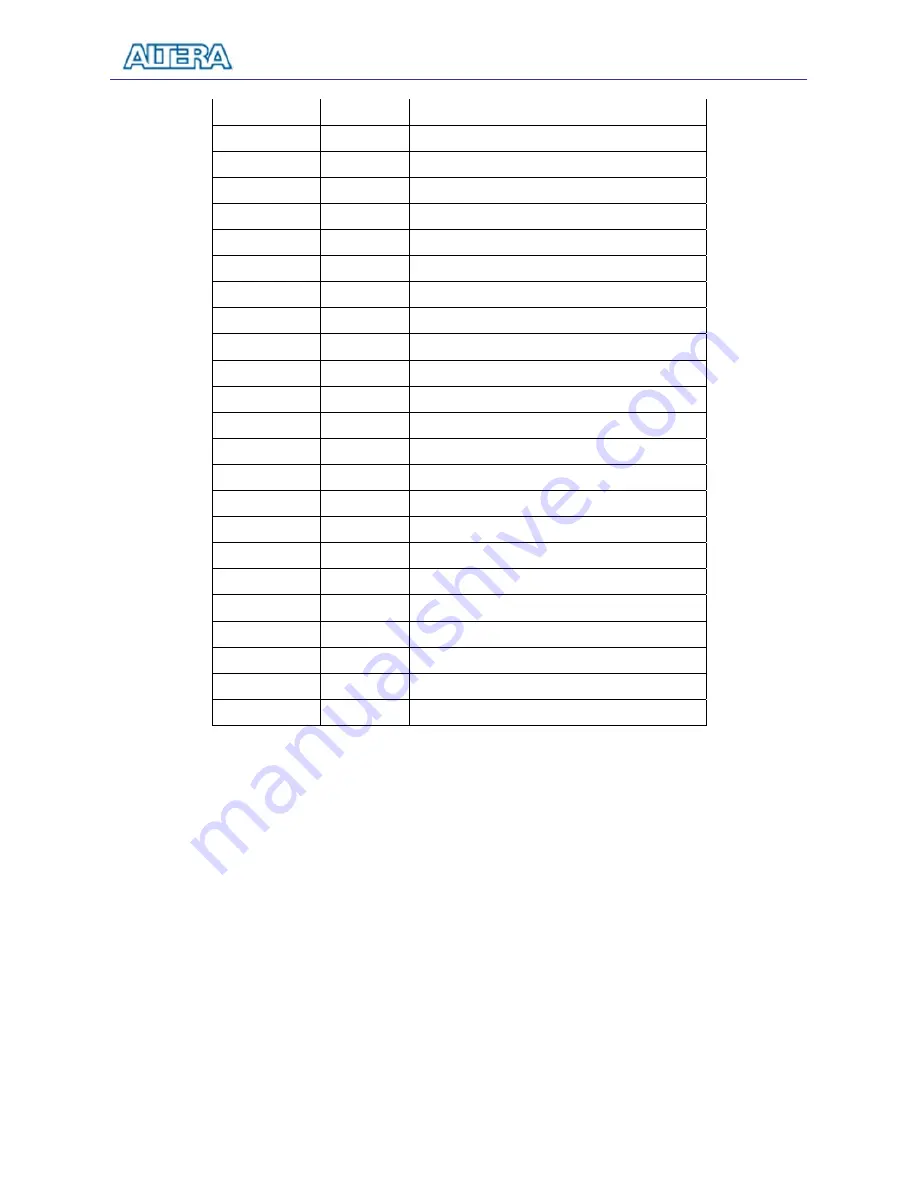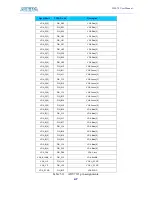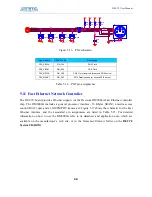
DE2-70 User Manual
38
HEX5_D[0] PIN_M3
Seven Segment Digit 5[0]
HEX5_D[1] PIN_L1
Seven Segment Digit 5[1]
HEX5_D[2] PIN_L2
Seven Segment Digit 5[2]
HEX5_D[3] PIN_L3
Seven Segment Digit 5[3]
HEX5_D[4] PIN_K1
Seven Segment Digit 5[4]
HEX5_D[5] PIN_K4
Seven Segment Digit 5[5]
HEX5_D[6] PIN_K5
Seven Segment Digit 5[6]
HEX5_DP PIN_K6
Seven Segment Decimal Point 5
HEX6_D[0] PIN_H6
Seven Segment Digit 6[0]
HEX6_D[1] PIN_H4
Seven Segment Digit 6[1]
HEX6_D[2] PIN_H7
Seven Segment Digit 6[2]
HEX6_D[3] PIN_H8
Seven Segment Digit 6[3]
HEX6_D[4] PIN_G4
Seven Segment Digit 6[4]
HEX6_D[5] PIN_F4
Seven Segment Digit 6[5]
HEX6_D[6] PIN_E4
Seven Segment Digit 6[6]
HEX6_DP PIN_K2
Seven Segment Decimal Point 6
HEX7_D[0] PIN_K3
Seven Segment Digit 7[0]
HEX7_D[1] PIN_J1
Seven Segment Digit 7[1]
HEX7_D[2] PIN_J2
Seven Segment Digit 7[2]
HEX7_D[3] PIN_H1
Seven Segment Digit 7[3]
HEX7_D[4] PIN_H2
Seven Segment Digit 7[4]
HEX7_D[5] PIN_H3
Seven Segment Digit 7[5]
HEX7_D[6] PIN_G1
Seven Segment Digit 7[6]
HEX7_DP PIN_G2
Seven Segment Decimal Point 7
Table 5.4. Pin assignments for the 7-segment displays.
5.4
Clock Circuitry
The DE2-70 board includes two oscillators that produce 28.86 MHz and 50 MHz clock signals.
Both two clock signals are connected to the FPGA that are used for clocking the user logic. Also,
the 28.86 MHz oscillator is used to drive the two TV decoders. The board also includes an SMA
connector which can be used to connect an external clock source to the board. In addition, all these
clock inputs are connected to the phase lock loops (PLL) clock input pin of the FPGA allowed users
can use these clocks as a source clock for the PLL circuit.
The clock distribution on the DE2-70 board is shown in Figure 5.8. The associated pin assignments
for clock inputs to FPGA I/O pins are listed in Table 5.5.
















































